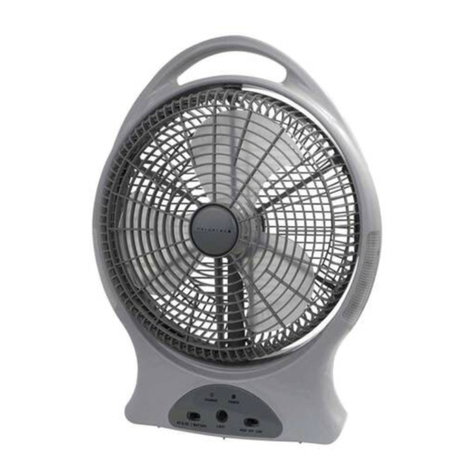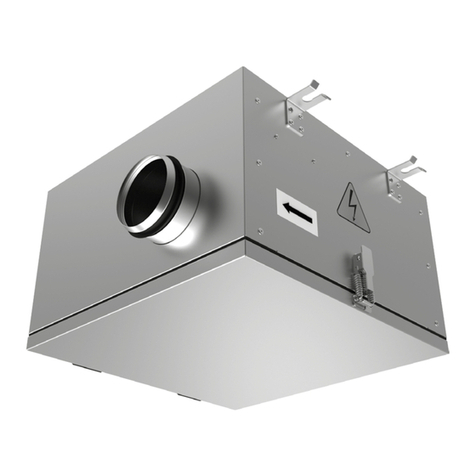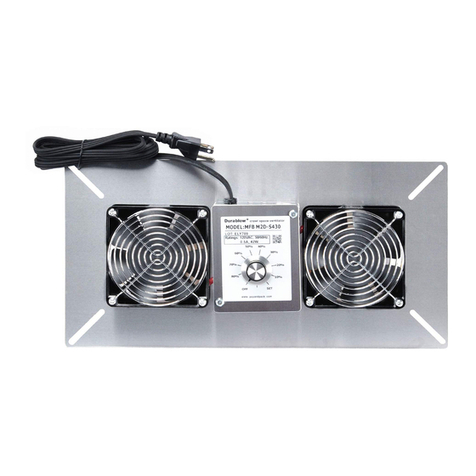Harvard Apparatus Inspira ASV MA1 55-7058 User manual

Harvard Inspira
Advanced Safety Ventilator
User's Manual
Publication 5404-001-REV-C
Inspira Advanced Safety Ventilator,
Volume Controlled MA1 55-7058
Inspira Advanced Safety Ventilator,
Pressure Controlled MA1 55-7059

EU Directives WEEE and RoHS
To Our Valued Customers:
We are committed to being a good corporate citizen. As part of that commitment,
we strive to maintain an environmentally conscious manufacturing operation. The
European Union (EU) has enacted two Directives, the first on product recycling
(Waste Electrical and Electronic Equipment, WEEE) and the second limiting the use
of certain substances (Restriction on the use of Hazardous Substances, RoHS).
Over time, these Directives will be implemented in the national laws of each EU
Member State.
Once the final national regulations have been put into place, recycling will be offered
for our products which are within the scope of the WEEE Directive. Products falling
under the scope of the WEEE Directive available for sale after August 13, 2005 will
be identified with a “wheelie bin” symbol.
Two Categories of products covered by the WEEE Directive are currently exempt
from the RoHS Directive – Category 8, medical devices (with the exception of
implanted or infected products) and Category 9, monitoring and control instruments.
Most of our products fall into either Category 8 or 9 and are currently exempt from
the RoHS Directive. We will continue to monitor the application of the RoHS
Directiveto its products and will comply with any changes as they apply.
•Do Not Dispose Product with Municipal Waste
• Special Collection/Disposal Required
WEEE/RoHS Compliance Statement

1
Harvard Apparatus Inspira Advanced Safety Ventilator User's Manual
Publication 5404-001-REV-C
Table of Contents
SUBJECT PAGE NO.
Warranty and Repair Information ......................................................3
General Safety Summary ....................................................................4
Introduction:
Theory of Operation ......................................................................5
Features ........................................................................................5
Installation:
Initial Setup and Location Requirements ......................................7
Typical Operation ..........................................................................7
Ventilator Connections:
Airway Tubing Connections: Front Panel ..............................8
Electrical Connections: Front Panel ......................................9
Electrical Connections: Rear Panel......................................10
Air Cylinder Installation ................................................................11
Fuse Replacement ......................................................................12
Operation:
Getting Started:
Turning Ventilator On ................................................................13
Main Operating Screens ..........................................................14
Key Functions ..........................................................................15
Safe Range™Respiratory Profiles ..............................................16
Entering Animal Weight ............................................................18
Starting and Stopping Ventilation..............................................19
Displaying Ventilation Parameters ............................................19
Warnings and Faults ................................................................20
Operation:
Respiration Profiles:
Entering Respiration Rate..........................................................22
Entering Tidal Volume ..............................................................22
Entering Sigh Breath ................................................................23
Disabling Sigh Breath ..............................................................23
Entering I:E Ratio ......................................................................25
Entering Pressure Settings (Inspira ASVv):
Inspiration Pressure ..................................................................26
Assist Pressure ........................................................................27
Entering Pressure Settings (Inspira ASVp):
Inspiration Pressure ..................................................................28
Assist Pressure ........................................................................29

2
Harvard Apparatus Inspira Advanced Safety Ventilator User's Manual
Publication 5404-001-REV-C
Table of Contents
SUBJECT PAGE NO.
PEEP Pressure ........................................................................29
Sigh Pressure ..........................................................................30
Modes of Operation:
Volume Mode ..........................................................................31
Pressure Mode ........................................................................31
Assist Mode..............................................................................31
Operation:
Advanced:
User Override............................................................................32
Using Digital and Analog I/O Ports ..............................................32
Remote Control/Monitoring (Serial Communications)................33
Changing Air Cylinders ............................................................36
Hardware Setup............................................................................37
Diagnostics ..................................................................................39
Power Failure ..............................................................................44
General Maintenance and Cleaning ............................................44
Appendices:
A. General Specifications ......................................................45
B. I/O Specifications ..............................................................46
C. Serial Commands, Queries and Responses ................47-48
D. Glossary of Terms ..............................................................49
E. Sample Waveforms ............................................................50
F. Frequently Asked Questions ........................................51-52
G. Recommended Cylinder Size ............................................53
H. Recommended Port Size ..................................................54
I. Using Inspira with Pressurized and Anesthetic Gasses ....55
J. Generating PEEP with Inspira ASVv ................................56

3
Harvard Apparatus Inspira Advanced Safety Ventilator User's Manual
Publication 5404-001-REV-C
CAUTION: Not for clinical use on human patients.
Warranty and Repair Information
Serial Numbers
All inquires concerning our product should refer to the serial number of the unit.
Serial numbers are located on the rear of the chassis.
Calibrations
All ventilators are calibrated at rated voltage and frequency.
Warranty
Harvard Apparatus warranties this instrument for a period of two years from date of
purchase.At its option, Harvard Apparatus will repair or replace the unit if it is found
to be defective as to workmanship or materials.This warranty does not extend to dam-
age resulting from misuse, neglect or abuse, normal wear and tear, or accident. This
warranty extends only to the original customer purchaser.
IN NO EVENT SHALL HARVARD APPARATUS BE LIABLE FOR INCIDENTAL OR
CONSEQUENTIAL DAMAGES. Some states do not allow exclusion or limitation of
incidental or consequential damages so the above limitation or exclusion may not
apply to you. THERE ARE NO IMPLIED WARRANTIES OF MERCHANTABILITY,
OR FITNESS FOR A PARTICULAR USE, OR OF ANY OTHER NATURE. Some states
do not allow this limitation on an implied warranty, so the above limitation may not
applyto you.
If a defect arises within the two-year warranty period, promptly contact Harvard
Apparatus, Inc. 84 October Hill Road, Building 7, Holliston, Massachusetts
01746-1388 using our toll free number 1-800-272-2775. Goods will not be accepted
for return unless an RMA (returned materials authorization) number has been issued
byour customer service department. The customer is responsible for shipping
charges. Please allow a reasonable period of time for completion of repairs, replace-
ment and return. If the unit is replaced, the replacement unit is covered only for the
remainder of the original warranty period dating from the purchase of the original
device.
This warranty gives you specific rights, and you may also have other rights which vary
from state to state.
Repair Facilities and Parts
Harvard Apparatus stocks replacement and repair parts. When ordering, please
describe parts as completelyas possible, preferably using our part numbers. If practi-
cal, enclose a sample or drawing.We offer a complete reconditioning service.
CAUTION
This apparatus is not registered with the FDA and is not for clinical use on human
patients.

4
Harvard Apparatus Inspira Advanced Safety Ventilator User's Manual
Publication 5404-001-REV-C
General Safety Summary
Please read the following safety precautions to ensure proper use of your Inspira ven-
tilator. To avoid potential hazards and product damage, use this product only as
instructed in this manual.
TO PREVENT HAZARD OR INJURY:
Use Proper Line Cord
Use only the specified line cord for this product and make sure line cord is certified
for country of use.
Ground the Product
This product is grounded through the grounding conductor of the power cord. To
avoid electric shock, the grounding conductor must be connected to earth ground.
Before making any connections to the input or output terminals of the product,
ensure that the product is properly grounded.
Make Proper Connections
Makesure all connections are made properly and securely. Any signal wire connec-
tions to the Inspira unit must be no longer than 3 meters.
Observe all Terminal Ratings
Review the operating manual to learn the ratings on all Inspira connections.
Do Not Operate Without Cover
Make sure that the top cover is securely in place before connecting to power source
to avoid injuryto bodyand damageto the product.
Use Proper Fuse
Use only specified fuses with product.
Avoid Exposed Circuitry
Do not touch any electronic circuitryinside of the product.
Do Not Operate with Suspected Failures
If damage is suspected on or to the product do not operate the product. Contact qual-
ified service personnel to perform inspection.
Place Product in Proper Environment
Review the operating manual for guidelines for proper operating environments.
Observe all Warning Labels on Product
Read all labels on product to ensure proper usage.
Protective Ground
Terminal
CAUTION
Refer to Manual

5
Harvard Apparatus Inspira Advanced Safety Ventilator User's Manual
Publication 5404-001-REV-C
Introduction
Theory of Operation
The Inspira is Harvard’s first ventilator that can ventilate animals from mice to cats
using the same machine. Its versatility and ease of use allow safer and superior ven-
tilation.The InspiraVentilator uses an advanced piston/cylinder assembly and a micro-
processor controlled actuation mechanism to precisely control respiration profiles.
Two interchangeable piston/cylinder assemblies are available to provide a wide range
of tidal volumes. The ventilator auto-detects which cylinder, or if no cylinder, is
installed. Variable flow valves control the gas flow for inhalation and exhalation.
The Inspira ASV Volume Controlled Ventilator delivers the desired tidal volume to the
animal by precisely controlling the stroke of the piston. Since actual stroke length
(and therefore tidal volume) may be modified for a given stroke, sigh breaths are sup-
ported. Since stroke speed is precisely controllable during inspiration and expiration,
variable inspiration-to-expiration ratios are also supported. A pressure sensor contin-
uouslymonitorsthe airwaypressureto prevent over-pressure conditions. Most vol-
ume-controlled ventilators presently available do not support sigh breaths and do not
provide any pressure monitoring as a safety feature.
The Inspira ASVp pressure-controlled ventilator adds pressure control capability to
the ASVv volume-controlled platform. Inspiration pressure is limited to the user-
entered pressuresetting. Flow rates areautomaticallyadjusted by the microcon-
troller by changing the tidal volume while keeping the inspiration time constant. The
flow rate is adjusted so that the inspiration pressure limit is reached near the end of
the piston stroke, ensuring that animals with a higher airway resistance receive the
majority of the expected tidal volume and that the ventilator does not prematurely
terminate the piston stroke. No manual adjustment of inspiratory flow rates is
required.
The ASVp also adds PEEP capability for both the volume- and pressure-control modes.
The machine allows a PEEP setting up to 10cmH2O.
Features
Volume Control Mode
The ventilator delivers a known volume of gas to the patient on each inspiration
stroke. Respiration frequency and I:E Ratio determine amount of time for inspiration
and expiration phases.
Figure 1. Front view of
Inspira Advanced Safety Ventilator
Figure 2. Rear view of
Inspira Advanced Safety Ventilator

6
Harvard Apparatus Inspira Advanced Safety Ventilator User's Manual
Publication 5404-001-REV-C
Introduction
Pressure Control Mode (Inspira ASVp Only)
The ventilator delivers gas to the patient until the user-selected pressure limit is
reached.Flow rate is automatically adjusted by the machine so that the pressure limit
is reached near the end of the inspiration time. Respiration frequency and I:E Ratio
determine the amount of time for inspiration and expiration phases.
Adjustable I:E Ratio
This option allows the user to select the ratio of inhalation to exhalation times when
advanced respiratory control is needed. This feature is intended to allow greater res-
piratory control for research. The default I:E Ratio is 50%.
Flow-Rate Monitoring (Future Feature)
Flow-rate monitoring will allow continuous monitoring of the rate at which the gas
is being delivered to the animal. This feature will also aid respiratory research.
Programmable Sigh Breath
Continuous, long-term ventilation combined with the force of gravity will cause the
animal’s lungs to begin to collapse. Introducing a larger than normal tidal volume
over-inflates the animal’s lungs, replicating a natural sigh. It allows the lungs to
expand and opens the collapsed alveoli. Sigh breaths are supported in both modes.
In the volume-controlled mode,a sigh tidal volume is used. In the pressure-controlled
mode, a sigh pressure limit is used.The frequency and volume of the sigh breath are
user selectable in volume-controlled mode. In the pressure-controlled mode, the fre-
quency and pressureof the sigh breaths are selectable.
Respiratory Assist
The Inspira ventilator supports Respiratory Assist in both volume-and pressure-con-
trolled modes.This feature is used to wean an animal off the ventilator.When the ani-
mal attempts to initiate a breath on its own, a pressure sensor detects the drop in air-
way pressure.This drop initiates a ventilation cycle.The sensitivity of the Assist Mode
is adjustable from –1 to –10 cmH2O. The ventilator lets the animal initiate breaths
independentlyas long as its breathing rate is greater than the respiration rate set by
the user or calculated by the microprocessor. If the animal does not try to initiate a
breath, Inspira warns the user.
Airway Pressure Monitoring
The ventilator monitors the pressure of gas delivered to the animal being ventilated.
This safety feature prevents the operator from over or under pressurizing the lungs
of the animal. When Inspira detects an over-pressurization condition it sounds an
alarm, stops the inspiration stroke, and then cycles to expiration. Inspira continues
to ventilate but does not deliver enough gas to over-pressurize the lungs.
Overpressureconditions may result from occluded or restricted airways. When
Inspira detects an under-pressurization condition it sounds an alarm. This condition
could result from an airway disconnect or large leaks. Once again, Inspira continues
to ventilate while requesting user intervention. These features ensure that the animal
is kept safe from improper ventilator setup.
PEEP (Inspira ASVp Only)
Positiveend-expiratorypressure (PEEP) is settable in the Inspira ASVp in both volume
-and pressure-controlled modes.The PEEP is adjustable from 0 to 10 cm H2O.

7
Harvard Apparatus Inspira Advanced Safety Ventilator User's Manual
Publication 5404-001-REV-C
Installation
Initial Setup
1. Remove unit from box.
2. Remove foam-packing inserts from both ends of the ventilator.
3. Locate and carefully remove air cylinders and power cord from shipping
material.
4. Visually inspect both the ventilator and the air cylinders for any damage that
might have occurred in the shipping process. The unit is shipped without
the air cylinder installed. Please refer to “Air Cylinder Installation” to properly
install the cylinder, see pages 11 to 12.
5. The Inspira is shipped from the factory with a North American line cord with
aU.S. three wire molded power plug on one end and an IEC320/C13 connec-
tor on the other. Use only an approved AC line cord with a molded
IEC320/C13 connector certified for country of use. Only connect to ground-
ed power receptacles to help ensure proper grounding; do not use adapter
plugs.
6. Read the manual to become familiar with all features and functions of the
Inspira.
Location Requirements
•Asturdy, level, clean, nonflammable and dry surface
•Minimum of 1 inch (2.5 cm) clearance around the pump
•Adequate power supply
•Room temperature 4°to 40°C (40° to 104°F)
• Relative humidity of 20 to 80%
• A well ventilated room
Typical Operation
The Inspira ventilator is designed to respirate small animals with a body mass ranging
from 15 grams to 10 kilograms. It can operate at respiration rates of 5 to 200 breaths
per minute (bpm) and can deliver tidal volumes of 0.1 to 100 cc. It is designed for use
in a typical laboratory, operating room,or any other well-ventilated,nonexplosive envi-
ronment. The Inspira can be used to deliver all types of nonexplosive gas mixtures
including, but not limited to, anesthetic gases and 100% oxygen.
W
WA
AR
RN
NI
IN
NG
G!
!Do not use in the presence of explo-
sive gasses or in a 100% oxygen environment.

8
Harvard Apparatus Inspira Advanced Safety Ventilator User's Manual
Publication 5404-001-REV-C
Installation
Airway Tubing Connections:
Front Panel
The Inspira ASV provides four airway-tub-
ing connections at the front of the
machine. A fifth port (Side Stream) is pro-
vided to support advanced options.
These ports are standard 1/8”-27 NPT
threaded ports and may accept many
types of fittings including barbed and
luer-lock. This allows for a wide range of
tubing sizes and for accommodating air
filters, if needed. The functions of these
connections are as follows:
To Animal
Flow of source gas from ventilator to
animal.
From Animal
Flow of expired gas from animal to
ventilator.
Exhaust
Flow of expired air from ventilator. This
gas may be vented to room, recirculated
for rebreathing, collected, and or filtered if
chemicals are present in the expired air.
Figure 3.Airway Tubing Connections
CAUTION: Do not vent
anesthesia gases to
room air.
Source
Flow of gas used by Inspira for inspira-
tion. Connect to the source of inspira-
tion gas or leave disconnected to use
room air.
Side Stream
Not used in this model.
CAUTION: Do not con-
nect Inspira to pressur-
ized gas sources unless
proper pressure regulation is pro-
vided to equalize the pressure
with atmospheric pressure.
Failure to do so could result in
excessive and unknown tidal vol-
umes delivered to the animal.
VENTILATOR CONNECTIONS
The Inspira ASV comes with connection ports located on the front and rear panels of
the ventilator. These connections are shown on the following pages.

9
Harvard Apparatus Inspira Advanced Safety Ventilator User's Manual
Publication 5404-001-REV-C
Installation
Electrical Connections: Front Panel
Inspira provides four BNC type connectors at the front of the machine. Their func-
tions are as follows:
Sync Out
Produces a digital pulse at the start of the respiration cycle allowing synchronization
of other electronic equipment with Inspira’s respiration cycle.
Trigger In
For use with equipment which uses a digital signal to start and stop respiration. An
example of this type of equipment would be a footswitch.
Analog Out 1
An analog signal representing the airway pressure within the ventilator. This signal
may be monitored with an oscilloscope.
Analog Out 2
Not used in this model.
Note: Electrical specifications for these signals are given in Appendix A.
Figure 4. Front Panel

10
Harvard Apparatus Inspira Advanced Safety Ventilator User's Manual
Publication 5404-001-REV-C
Installation
Electrical Connections:
Rear Panel
Inspira provides power entry, RS232 com-
munications, and User I/O (Optional) con-
nections at the rear of the machine. Their
functions are as follows:
User I/O
Not used in this model.
RS232 In
For use with a host computer to establish a
communication connection between the
computer and the Inspira.
1. No connection
2. Transmit Data (TXD)
3. Receive Data (RXD)
4. Data Terminal Ready Input (DTR)1
5. Signal Ground (GND)
6. No Connection
7. Request to Send Input (RTS)2
8. No Connection
9. No Connection
1
Used for Vpp Enable in optional flash programming configuration; disabled in hardware.
2
Used as Serial Reset in optional flash programming configuration; disabled in hardware.
RS232 Out
Used to establish a daisy chain serial connection with other devices. Future models
will support a serial printer connection through this port.
1. No connection
2. Receive Data (RXD)
3. Transmit Data (TXD)
4. No Connection
5. Signal Ground (GND)
6. No Connection
7. No Connection
8. No Connection
9. No Connection
Power Connection
Power in.
Note: Electrical specifications for these signals are given in Appendix A.
Figure 6. RS232 Connector
Figure 5. Rear Panel

11
Harvard Apparatus Inspira Advanced Safety Ventilator User's Manual
Publication 5404-001-REV-C
Air Cylinder Installation
Key Information
1. Use ONLY Harvard Apparatus approved air cylinders. Any other non-
approved cylinders may damage the Inspira unit.
2. Do not oil or grease the air cylinders. Inspira’s special air cylinders are self-
lubricating, requiring no additional lubrication.Applying oil or grease may
damage the air cylinders.
3. When switching the air cylinders, the power must be SWITCHED OFF.
4. Tampering with any components besides the air cylinders inside of the
Inspira will void the warranty.
Installation
CAUTION: Electrostatic discharge (ESD) can damage compo-
nents on the circuit boards. Avoid contact with the circuit
boards when changing cylinders.
Figure 7.Air Cylinder Installation
Procedure
Before the Inspira can be used for the first time, one of the two provided air cylinders
(10 cc and 100 cc) must be installed. Choose the proper cylinder depending on the
size of the animal to be ventilated. Remove the top cover of the ventilator by remov-
ing the four phillips head screws which hold the top cover in place,one on either side
of the unit and one in each of the top two black feet. Once the top cover is removed
locate the mounting area for the air cylinders as seen in figure 7. Place the small pro-
vided O-ring in the mounting groove, which is found on the valve block as illustrated.
Then move Inspira’s white plunger back by turning the coupling connecting the black

12
Harvard Apparatus Inspira Advanced Safety Ventilator User's Manual
Publication 5404-001-REV-C
Installation
CAUTION: Do not overtighten the cylinder. Overtightening the
cylinder can cause the glass cylinder to crack.
the cylinder in place.
Now that the air cylinder is in place, rotate the lead screw to position the flag pin in
between both the front and rear switches. To complete the installation,replace the top
cover of the Inspira unit. When Inspira is powered on it should display the correct
cylinder size after initializing.
Fuse Replacement
Key Information
1. Make sure the power cord is disconnected from the main supply before serv-
icing the fuse.
2. Use only Type 3AG, 1/4” x 11/4”, 1 amp, 250 volt,Type T (time delay) fuses
(Harvard Apparatus part number 5113-033 or equivalent).
Turn off power and remove power cord from power module. Use a straight blade
screwdriver to pry open the access door.Remove the fuse holder and then remove the
fuses from this holder as shown in figure 8 below. Replace fuses using only 1 amp,
250 volts,Type T fuses. Then replace the fuse holder.
Note: A fuse, which is not operator replaceable, is located on the power supply. This
fuse is rated 5 amps, 250 volts.
lead screw to the motor shaft. Turn the lead screw until the flag pin on the rear of the
plunger is vertically in-line with the rear switch as illustrated. (Note: When installing
the air cylinder, do not change the bends of the cylinder detection switches or else the
correct cylinder will not be detected.) Now insert the cylinder by placing the plunger
portion of the air cylinder on the end of Inspira’s white plunger. Carefully slide the air
cylinder back on the white plunger compressing the air cylinder just enough to allow
the front end of the cylinder to be lowered into place. Once the air cylinder is fit in
place, screw the air cylinder’s threaded nipple into the valve block and hand tighten
Figure 8. Fuse Replacement

13
Harvard Apparatus Inspira Advanced Safety Ventilator User's Manual
Publication 5404-001-REV-C
Turning Ventilator On
Power must be properly supplied to the ventilator, according to the power specifica-
tions. Locate the power switch on the rear of the ventilator. Toggle the switch so that
the “I” side of the switch is pressed down. The ventilator is now powered on.
Volume-Controlled Ventilation
With machine powered ON, press and release the SELECT MODE key until VOL mode
is selected. Press SET and WEIGHT and enter the animal’s weight in kg. Press and hold
parameter keys in order to verify respiration parameters. If any parameters need to be
changed, press the SET key and the appropriate parameter key and enter the value to
set. Press and release the RUN/STOP key to start ventilation.
Pressure-Controlled Ventilation (Inspira ASVpOnly)
With machine powered ON, press and release the SELECT MODE key until PRES mode
is selected. Press SET and WEIGHT and enter the animal’s weight in kg. Press and hold
parameter keys in order to verify respiration parameters. If any parameters need to be
changed, press the SET key and the appropriate parameter key and enter the value to
set. Press and release the RUN/STOP key to start ventilation.
Operation: Getting Started
Figure 9. Main Operating Screen, Volume-Control Mode

14
Harvard Apparatus Inspira Advanced Safety Ventilator User's Manual
Publication 5404-001-REV-C
Operation: Getting Started
Main Operating Screens
The main operating screen is the default display. This screen displays the operating
mode, current operating variables, such as tidal volume and respiration rate, and the
status of the ventilator (stopped or running).
Main Operating Screen – Pressure Control Mode
Main Operating Screen – Pressure Assist Control Mode
Main Operating Screen – Volume Control Mode
Main Operating Screen – Volume Assist Control Mode
Paw Average Peak Pressure in cmH2O
Vt Tidal Volume in cc
Rate Respiration Rate in BPM
RRemote Mode Indication

15
Harvard Apparatus Inspira Advanced Safety Ventilator User's Manual
Publication 5404-001-REV-C
Set Keys
Set
Allows modification of a data item. To
modify a data item,press the relevant key
after pressing the [Set] key. Also used to
toggle different options when prompted.
Rate
Displays/Sets current respiration rate.
Volume
Displays/Sets current tidal volume in vol-
ume mode.
Weight
Displays/Sets current animal weight.
Sigh
Displays/Sets sigh parameters and manu-
ally triggers a sigh breath.
I:E Ratio
Displays/Sets the current inspiration to
expiration (I:E) ratio.
Pressure
Displays/Sets pressure limits.
RS232
Displays/Sets current RS232 device(s)
attached.
Set Keys Toggle Keys Data Entry Keys
Figure 10. Front Panel
Toggle Keys
Pressing these keys toggle through the
successive states of the key’s function.
Run/Stop
Starts/Stops the ventilator.When stop-
ping, the ventilator will finish its current
stroke before ceasing ventilation.
Select Mode
Toggles through available run modes
with each press of the key. It is also used
to select entry choices in hardware
setup.
Data Entry Keys
1, 2, 3, 4, 5, 6, 7, 8, 9, 0, •
Used to enter numeric data values or
access special features.
C
Clear; clears numeric data values prior to
entry.
Enter
Saves and stores displayed data value in
memory when setting a data item.
Operation: Getting Started

16
Harvard Apparatus Inspira Advanced Safety Ventilator User's Manual
Publication 5404-001-REV-C
Operation: Getting Started
Safe Range™Respiratory Profiles
Setting up the ASV ventilator is both easy and safe thanks to the Safe Range™software.
Once the animal’s body weight has been entered the software computes the median
settings for tidal volume and respiratory rate.These same equations are used to cal-
culate a Safe Range™around the median values. Inspira uses the entered weight to
calculate the correct tidal volume and respiratory rate for the animal. The tidal vol-
ume (in liters) is determined by the equation 0.0062 x Mb1.01 where Mbis the animal
mass in kilograms.
The respiratory rate (in min-1) is determined by the equation 53.5 x Mb-0.26. The Safe
Range™is established by computing a range of acceptable values, which are less than
or equal to ±10% of the calculated tidal volume and respiratory rate. All the default
parameter settings can be overridden.If you enter a setting outside of the Safe Range™
for the body mass of the animal to be ventilated you are warned that the value is out-
side the Safe Range™ and asked to confirm the setting.
SAFE RANGE – Pressure-Control Mode
Inspiration Pressure Range
Safe Range: 15 to 25 cmH2O
Full Range: 5 to 50 cmH2O
Sigh Pressure Range
Safe Range: Insp. Pressure to (Insp. Pressure + 10cmH2O) or 35cmH2O,
whichever is less
Full Range: Insp. Pressure to 50cmH2O

17
Harvard Apparatus Inspira Advanced Safety Ventilator User's Manual
Publication 5404-001-REV-C
Figure 11.Ventilator Graph
Operation: Getting Started
Ventilator Graph
The graph labeled as figure 11 below shows tidal volume vs. body mass and rate for labo-
ratory mammals in a resting state. (Apparatus dead space must be added.)
Ventilation Parameters
Mammals with < 70g Body Mass
Body Mass (g) Vt (ml) Rate (BPM)
15 0.1 159
20 0.12 148
30 0.18 133
40 0.24 123
50 0.30 117
60 0.36 111
70 0.42 107

18
Harvard Apparatus Inspira Advanced Safety Ventilator User's Manual
Publication 5404-001-REV-C
Operation: Getting Started
Entering Animal Weight
Key Information
• The Inspira can handle animal weights ranging from 0.015 to 10.00 kilo-
grams.
• The large cylinder can handle masses between 0.160 and 10.00 kilograms and
the small cylinder can handle masses between 0.015 and 0.59 kilograms.
• Entering an animal’s weight will allow Inspira to automatically choose a Safe
Range™tidal volume and respiration rate. No extra setup is required.
To enter the animal’s weight, press the [Set] key. The display should now read “Press
parameter key”. Press the [Weight] key. The display will now read“Enter Weight (Kg)”.
Simply use the numeric keypad and decimal point key to enter the proper weight
(between 15 g and 10 kg). The weight must be entered in kilograms. Inspira will allow
for the entry of up to three decimal places. After entering the weight press the [Enter]
key. The display should read “Change SV and BPM” (stroke volume and breaths per
minute). Use the [Set] key to move the bar cursor to select either “yes” or “no”. Press
[Enter] to select your choice. Selecting yes will change the SV and BPM to the auto-
matically calculated Safe Range™ventilation settings. Selecting no will leave the pre-
viously used SV and BPM settings, which may not be safe for the animal.
Step Key Display
This manual suits for next models
1
Table of contents
Other Harvard Apparatus Fan manuals
Popular Fan manuals by other brands
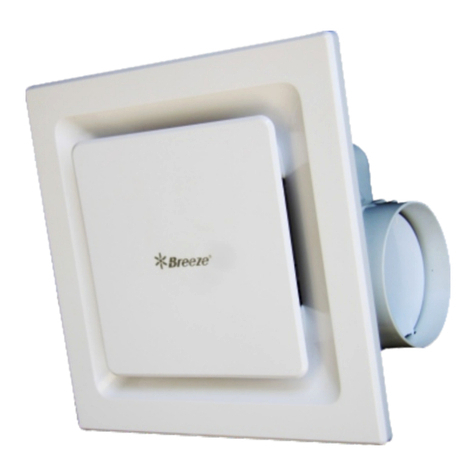
Breeze
Breeze CPD Series manual
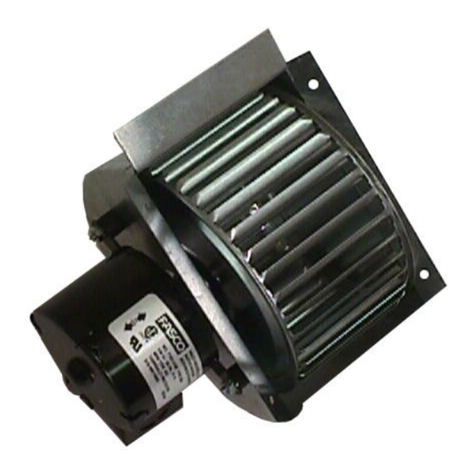
Field Controls
Field Controls 46011100 instruction manual
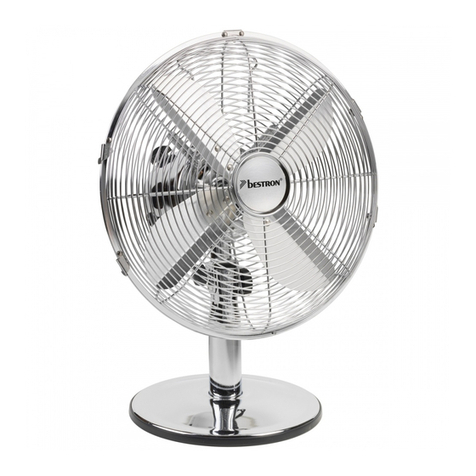
Bestron
Bestron SUMMER BREEZE DFT35CH instruction manual
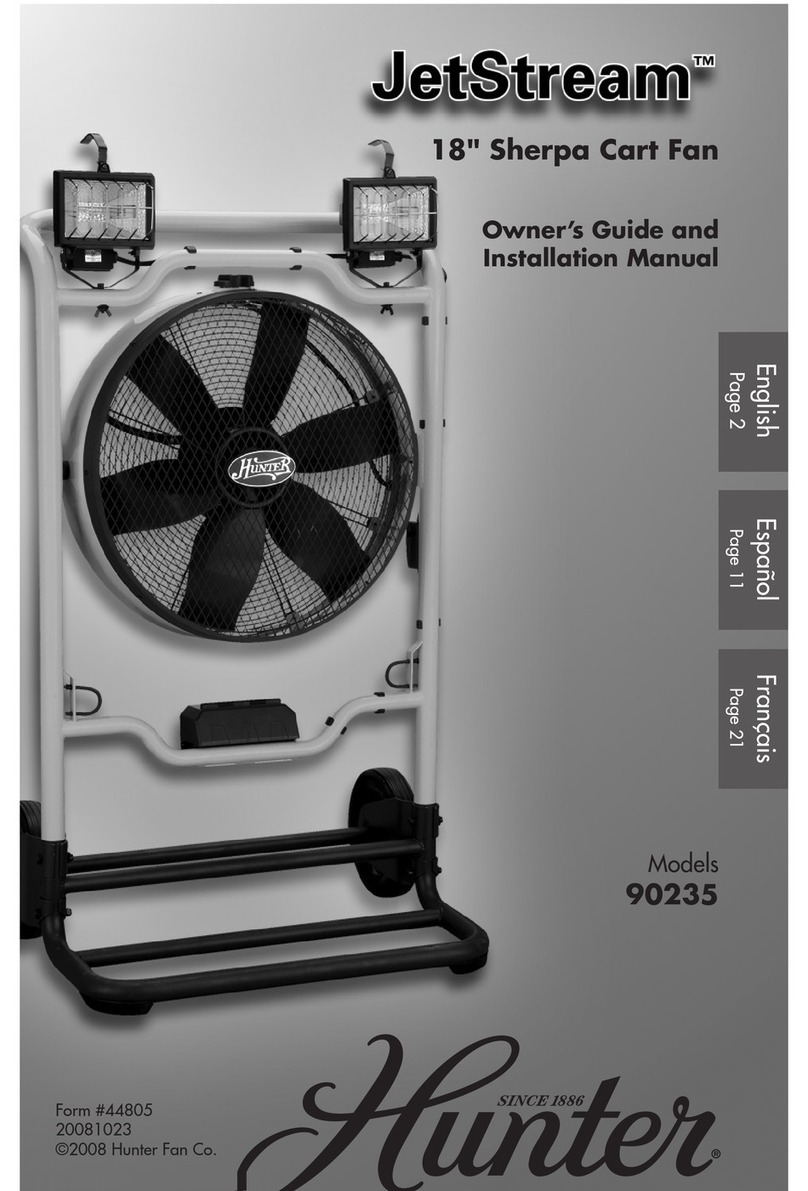
Hunter
Hunter JetStream 44805 Owners and installation manual

Havso
Havso Marie 4.0 530055 user manual

Polar Air
Polar Air MINI AHU HAHU-EC Installation, operation & service manual

Armstrong
Armstrong 21-AR quick start guide
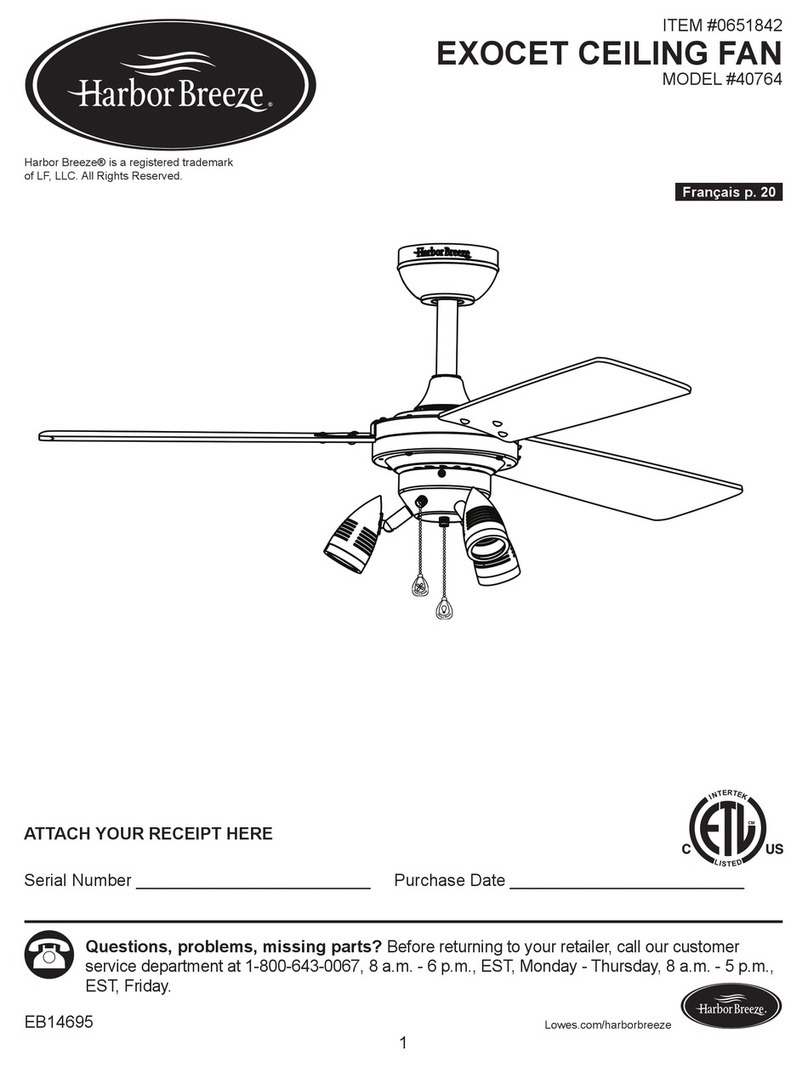
Harbor Breeze
Harbor Breeze EXOCET 40764 manual
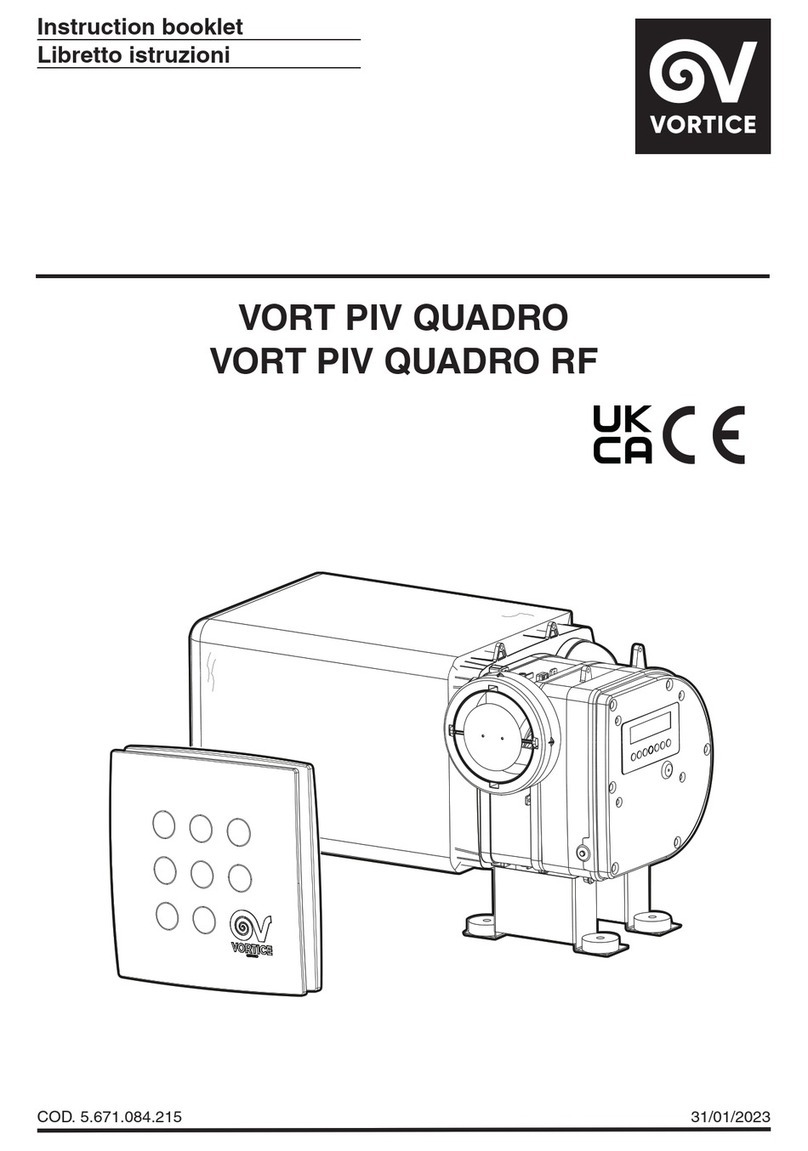
Vortice
Vortice VORT PIV QUADRO Instruction booklet
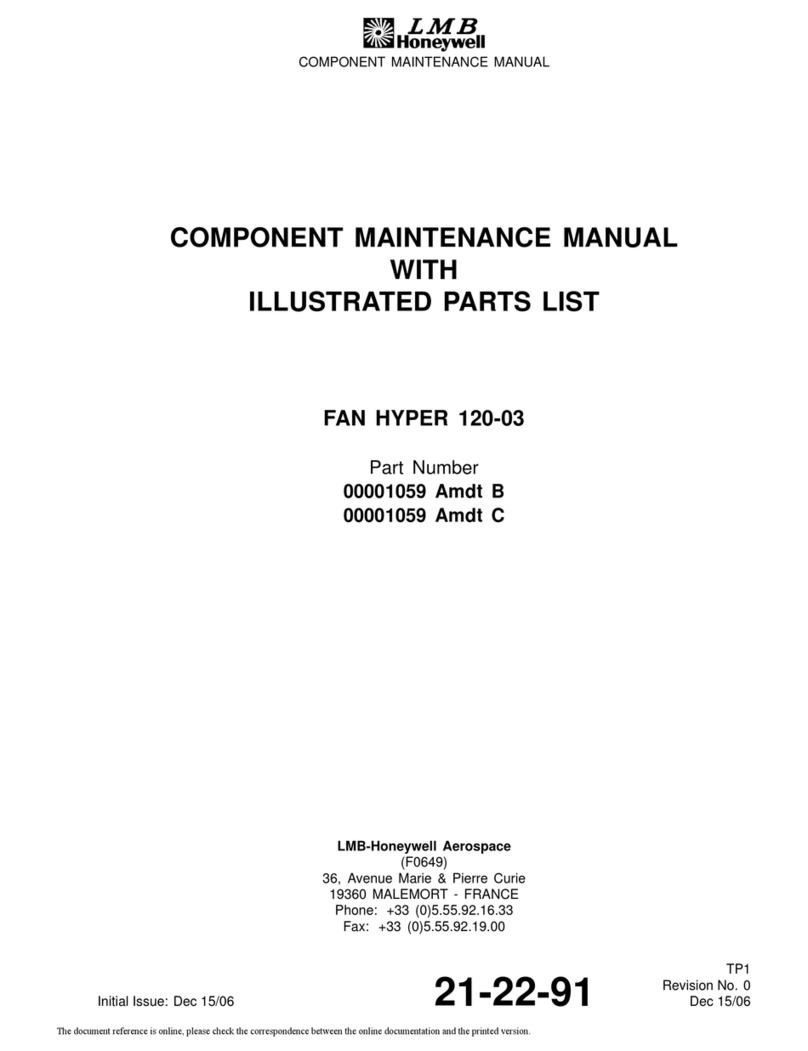
Honeywell
Honeywell LMB HYPER 120-03 COMPONENT MAINTENANCE MANUAL WITH ILLUSTRATED PARTS LIST
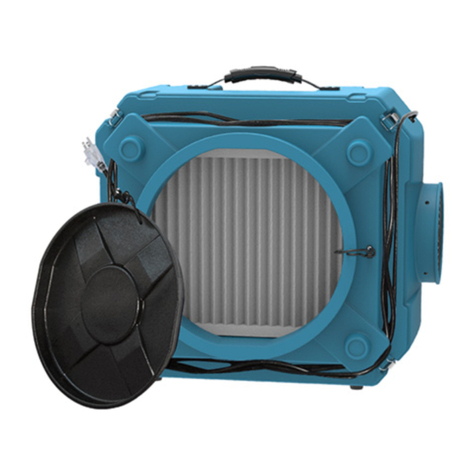
Uni-P Dry
Uni-P Dry EpiFresh 550 Installation, operation & service instructions

SHE
SHE SHE40ST2001SMF manual


